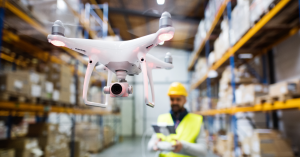Estimated reading time: 3 minutes
According to Gartner, emerging tech can offer businesses solutions that “optimize resilience, operations, and trust, scale vertical solutions and product delivery, and pioneer with new forms of engagement, accelerated responses, or opportunity.”
Interest in new technologies may be elevated in 2023 as businesses look for ways to operate more cost-effectively in an economic downturn with rising costs and labor shortages and to meet their environmental, social, and governance goals.
Analysts from Gartner and industry thought leaders identified several emerging technologies that could help businesses achieve their objectives in the coming year.
[Digital Immune System]
The digital immune system isn’t one technology. Instead, it’s a combination of technologies and practices that make systems less prone to failure and more resilient to recover quickly. Elements of digital immune systems include:
- Observability: Collecting data to monitor systems creates a feedback loop that helps operators detect problems more quickly and make informed decisions.

- Artificial intelligence: AI supports software testing with automated planning, execution, and analysis.
- Chaos engineering: Experimenting to reveal system vulnerabilities.
- Site reliability engineering: SRE helps organizations strike a balance between speed to market and stability and optimizing user experience.
- Software supply chain security: The digital immune system approach also considers external threats and increases transparency into vulnerabilities to them with software bills of materials (SBOMs) and version control and vendor risk management policies.
Gartner predicts that businesses that invest in digital immune systems will reduce system downtime by 80 percent and positively impact revenues.
[Web3]
Web3 puts the internet in the hands of users via decentralization. It uses blockchain technology and cryptocurrencies for transactions. Web3 allows you to annotate content with metadata that will enable users to use the web in new ways. For example, an image could take users directly to information about the products’ origins or the details of how the products were photographed. Additionally, it uses a digital language that machine learning (ML) systems can easily understand, enabling data on the web to be used in analyses. Grandview Research reports that the Web3 blockchain market, valued at $1.36 billion in 2021, will grow at a massive 44.9 percent CAGR from 2021 through 2030.
[Metaverse]
 Expect to see metaverse continue to gain traction. Businesses and organizations will explore new ways to enhance processes with augmented reality (AR), virtual reality (VR), AI, ML, Internet of Things (IoT), and blockchain to create virtual experiences.
Expect to see metaverse continue to gain traction. Businesses and organizations will explore new ways to enhance processes with augmented reality (AR), virtual reality (VR), AI, ML, Internet of Things (IoT), and blockchain to create virtual experiences.
Gaming applications are apparent. However, there are numerous applications for businesses and organizations. For example, Healthcare can use this technology to use simulations to help patients with post-traumatic stress or anxiety, for pain management therapies, and to train medical students. Retailers can create immersive experiences and even allow consumers to purchase in a virtual environment. And global companies can visit factories on the other side of the world, inspect machines, or meet managers there.
Metaverse technology is also poised for impressive growth, with analysts looking for the $38.85 billion market to grow at a 39.4 percent CAGR from 2021 to 2030.
[Quantum Computing]
IBM reports it’s on track to produce a 1000+ qubit (quantum bit) Condor processor, which will have the capacity to process data exponentially faster than traditional computer chips with only a fraction of the memory. Additionally, its roadmap includes introducing classical parallelized quantum computing with multiple Heron processors controlled by a single system.
Quantum computing applications include enhancing artificial intelligence, cybersecurity, pharmaceutical development, and financial modeling.
[Wi-Fi 6 and 7]
Wi-Fi 6’s maximum speed is 9.6 Gbps, and Wi-Fi 7 is predicted to have a top speed of 46 Gbps. They also offer increased bandwidth. For example, channel bandwidth in the 5 GHz band is 160 MHz, but in the 6 GHz band, it’s 320 MHz. They also open the door to better security and traffic prioritization.
Wi-Fi 6 and 7 can support the metaverse, reliably enable high-def video streaming, and enhance experiences for work-from-home or distributed teams. Gartner predicts that 60 percent of enterprises will use five or more wireless technologies by 2025.
[Drone Technology]
The unmanned aerial vehicle (UAV) drone market is growing at an 8.3 percent CAGR from 2022 to 2030, set to reach $55.8 billion. Drones may be the key to supply chain and last-mile delivery solutions. They also have construction, agriculture, military, and public safety applications, providing benefits, including labor costs and fuel savings.
Is Your Business on the Cutting Edge?
Extraordinary times call for exceptional measures, and you may be unable to help your clients achieve their objectives with legacy technologies. Use all the capabilities, both traditional and emerging tech, to innovate and meet demands in 2023.

